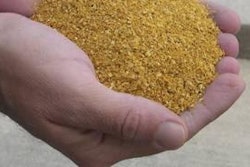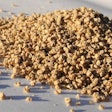A wide range of supplements are added to the diets of rearing pullets and commercial egg production flocks. These compounds are included in diets at low volume, frequently at less than 0.5% of the diet. The price of additives may vary widely and the cost should be related to both ton of feed and per dozen eggs produced.
The functions of additives include:
- Improving productivity through increasing egg numbers, egg mass or feed conversion efficiency;
- Enhancing quality of product such as intensifying yolk color or improving shell quality;
- Increasing the nutritional value of eggs through enrichment with selenium, vitamin D, or omega-3 PUFAs; and
- Promoting food safety by suppressing the presence of salmonella in feed.
Classification, efficacy of additives
The additives considered in this review can all be classified as CAPES (Consumer Acceptable Performance Enhancers). Since administration of antibiotics to laying hens during production is restricted to a single compound, this approach to improving performance or deriving other benefits other than for flocks under veterinary supervision is disallowed and is frequently ineffective under most practical conditions.
All additives must be effective with respect to claimed action. This implies a plausible explanation relating to biological activity. Compounds which fail to meet this standard, which requires published laboratory confirmation of the mode of action, should not be considered for registration by regulatory authorities or commercial adoption by producers. All claims by manufacturers must be substantiated by structured and scientifically valid experiments and field trials.
Measuring the benefit from additives can be difficult under commercial conditions. Simply comparing two adjacent houses and determining improvements amounting to a few eggs per hen or a small shift in grade cannot be regarded as positive proof of efficacy. Field trials are subject to inherent bias in the selection of flocks and facilities and are also influenced by confounding associated with uncontrollable factors such as microclimate, equipment function, disease exposure in relation to level of immunity and management.
|
Phytases |
|
|
Product |
Manufacturer |
|
Allzyme SSR |
|
|
Finase |
A/B Tech |
|
Natuphos |
|
|
Optiphos |
JBS-United |
|
Phyzyme EXP |
|
|
Quantum |
A/B Vista |
|
Ronozyme |
|
The number of hens in a flock has no bearing on the evaluation of an additive. A non-significant difference in a parameter is still non-significant even if the trial involved single comparisons involving hundreds of thousands of hens. It is, however, possible to increase sensitivity by replication which allows application of statistical techniques to evaluate the significance of differences in the parameters which are measured.
It is important to be able to analyze feed to determine the level of an additive, especially when conducting trials. Some compounds including botanicals, which cannot be assayed directly, present problems in determining the precise level of active ingredient in diets. The use of dye-impregnated metal particles as used in the Micro-Tracer™ system permits simple qualitative and semi-quantitative indications of the presence of a specific additive in a diet. Additives must be compatible with other ingredients in the diet and physical characteristics should allow for even distribution through the mix given the restraints of many small feed mills operating in the egg industry.
Evaluating the financial benefit from additives
The value of an additive can be determined by a benefit to cost analysis. Incremental revenue from increased egg yield, egg mass or grade, improved feed conversion efficiency or a reduction in mortality or downgrades which all contribute to enhanced revenue, represent the benefit side of the equation. The cost component includes the purchase of the additive, maintaining inventory, quality control procedures and analyses. Generally a benefit to cost ratio exceeding a value of 4 will justify use of an additive. In some cases, additives are evaluated on the basis of product differentiation, which is important with specialty or enriched eggs.
Additional nutrients including bioplexed or chelated minerals, vitamin supplementation beyond the nutritional requirements of flocks or specific ingredients containing nutrients such as DHA, which can be transferred to the egg, can be considered for specific markets. Carotenoid additives, which enhance yolk pigmentation, represent an additional dietary cost which should be considered among the broad range of organoleptic benefits as perceived by consumers of specialty eggs.
Enzymes
Enzymes are now accepted as beneficial additives. Initially only phytase preparations were added to diets and then only where mandated by regulatory authorities to reduce phosphorus excretion with environmental implications. With an escalation in the cost of inorganic phosphate supplements during the late 1990s, emphasis shifted to adding phytase enzymes to reduce dietary cost. The unprecedented increase in the price of corn, soybean meal and other ingredients during 1998 and again in 2008 led to the general adoption of broad-spectrum enzyme mixtures formulated to enhance the availability of energy and amino acids in ingredients.
The use of enzymes contributes materially to a reduction in feed and hence production cost when the price of ingredients is high. Due to the diversion up to one-third of the U.S corn crop to ethanol production, increased demand from China and unseasonable drought on production of grains in Eastern Europe and rain in Canada and Argentina, possibly as a result of the La Niña phenomenon, grain prices have increased materially from mid-2010 and will be higher in 2011. Accordingly, the value of enzymes will increase.
|
Mineral Supplements: Organics & Chelates |
|
|
Product |
Manufacturer |
|
Availa Mn/Zn |
|
|
Bioplex Mn/Zn |
Alltech |
|
DiaMune Se+Yeast |
|
|
Egg Shell 49 |
Alltech |
|
Mintrex Mn/Zn/Cu |
Novus |
|
Selenium Yeast |
Phibro/Prince |
|
Selenium Source AF |
Diamond |
|
Sel-Plex SE |
Alltech |
Nutritionists use a number of approaches in determining how diets are formulated when enzymes are used. One strategy is to formulate diets with degraded nutritional specifications for energy and critical amino acids.
An alternative is to provide dummy values for enzyme mixtures based on controlled trials which demonstrate enhancement of energy and amino acid content of the major ingredients.
Another approach is to increase the energy and amino acid values for ingredients in the matrix as determined by published data relating to enzyme additives.
Under current prevailing ingredient costs, enzyme supplementation costing approximately $1.00 to $1.50 per ton may reduce feed cost by up to $10 to $15 per ton representing 2c to 4c per dozen. If corn escalates to $6 per bushel and soybeans to $12 per bushel, savings will be increased proportionately.
Prebiotics and probiotics
Prebiotics, mainly in the form of fermentation extracts containing oligosaccharides have been shown to have a number of benefits in the intestinal tract of chickens. Mannanoligosaccharides will agglutinate pathogenic bacteria with Type-1 fimbriae including many salmonella serotypes. A second benefit is associated with modifying the intestinal flora to increase the proportion of beneficial organisms including lactobacilli.
Probiotics, which comprise either the spores or active cultures of beneficial microorganisms, represent the fastest growing category of additives for flocks producing eggs. Since most antibiotics are either disallowed or considered to be unacceptable from the standpoint of consumers, probiotics have emerged as beneficial in enhancing production and reducing the occurrence of enterotoxemia associated with the proliferation of Clostridium species in the intestinal tract.
Nonspecific enteritis characterized by wet droppings and stained eggs and the emerging condition referred to as focal duodenal necrosis (FDN) respond favorably to direct-fed microbial preparations with or without yeast or other fermentation residues. A number of manufacturers have combined the benefits of prebiotics and probiotics in commercial preparation which are now available and can be fed without restriction.
Antioxidants
Oxidative rancidity of animal fat and the lipid content of diets provided by incorporation of vegetable oils can result in the destruction of vitamins in diets (in vitro). Reducing the potency of vitamins A and E depresses the immune system and hence livability and response to vaccination. Interference with vitamin D can affect shell integrity.
Free radicals produced during oxidation are toxic and will interfere with the function of cell membranes and sub-cellular structures which incorporate lipoproteins. This in vivo action of free radicals at the cellular and sub-cellular levels will degrade performance. A range of antioxidants are available to stabilize fats and oils and animal by-products to avoid both in vitro and in vivo oxidation.
Inhibitors of mycotoxins
Mycotoxicosis is a recurring problem and can detract from production if either or both trichothecene toxins and aflotoxins are present. Currently, the FDA has no standards for feed additives which either sequester mycotoxins or contribute to their enzymatic breakdown when added to diets.
If these compounds are available in the U.S., they are generally marketed as “anti-caking agents” with no overt claims of anti-mycotoxin activity made by the manufacturers. Effectiveness of yeast cell wall extracts and enzymatic compounds have been shown with varying intensity under practical conditions in countries where mycotoxicosis is prevalent and use is permitted by regulatory authorities.
Available feed additives for egg production
The practical categories of feed additives suitable for the egg industry are indicated in alphabetical listings in the following series of tables arranged according to category. The lists are not inclusive and any omissions are unintentional. Inclusion of a compound in a specific category does not necessarily represent endorsement of either efficacy or safety but the listings are provided for the guidance and information of readers.
Because of the complexity and wide range of additives available, producers are advised to evaluate products according to the following criteria:
- Documented mode of action;
- Availability of peer-reviewed reports on efficacy and safety;
- Official registration;
- Reputation and reliability of the manufacturer and country of origin of the compound; and
- Projection of benefit to cost ratios using in-company monitoring of results using structured comparisons.







